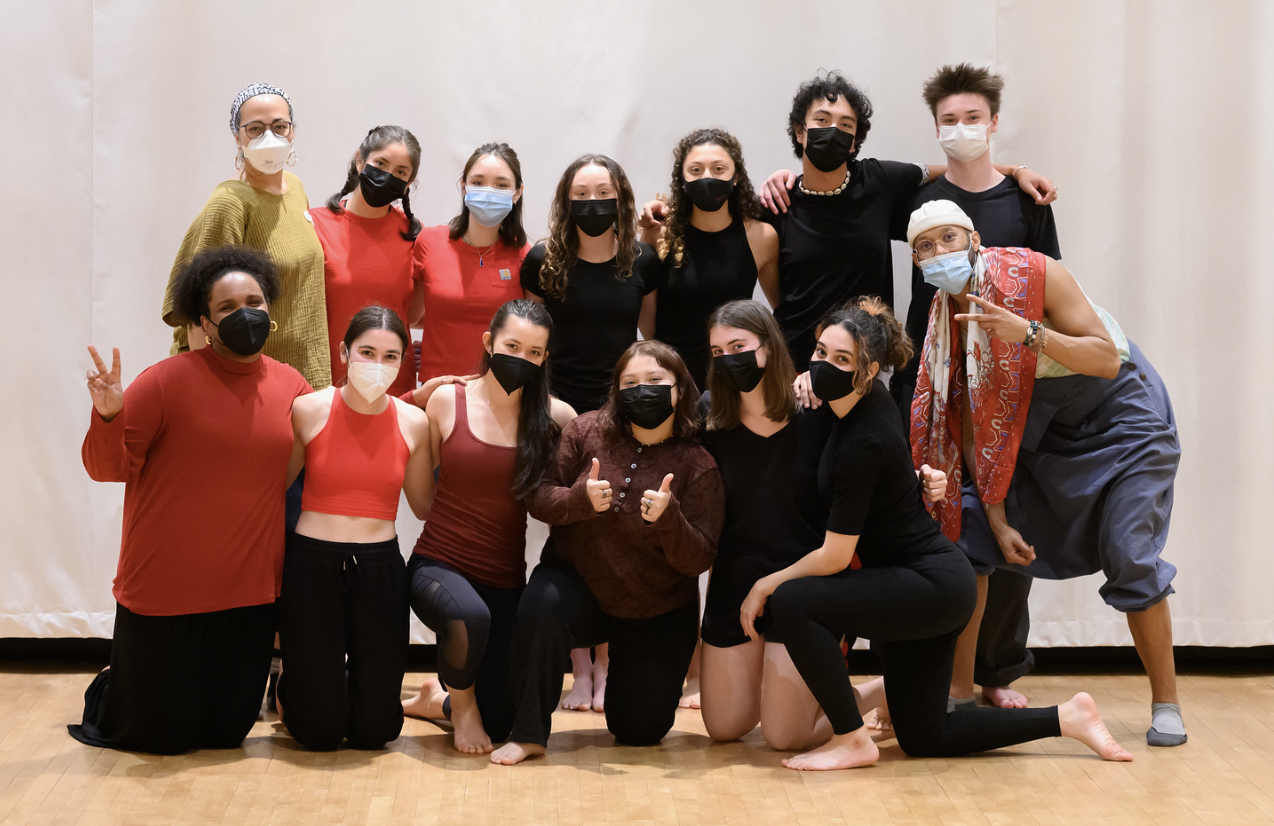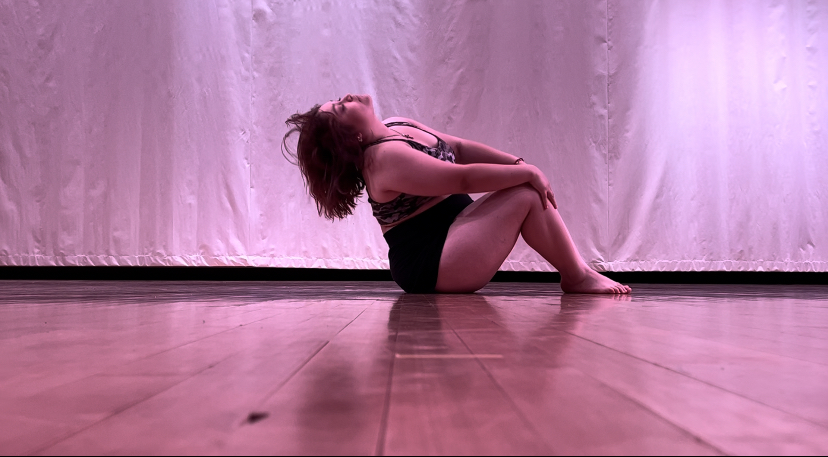My experience in Dance as Activism during Spring ’23
Let me just preface that I had no prior academic experience with dance before this year. My familiarity with dance was mainly limited to participating in Hispanic cultural movements such as cumbia, merengue, and bachata dance styles with my family. While I recognized dance as a practice, I was unaware of its emotional and social vulnerability. Initially expecting a focus on physical activity in this class, I encountered unexpected challenges as I gained knowledge about social injustices through exposure to diverse artists, activists, and community organizers advocating for justice in their home countries.
This expansion of awareness was both enlightening and challenging, pushing me out of my comfort zone to confront uncomfortable truths. It compelled me to examine my privileges and acknowledge my contributions to existing social structures. It was a process that involved facing uncomfortable realities, acknowledging the need for personal growth and change. Stepping out of my comfort zone became an integral part of this transformative experience, leading me to engage in innovative conversations, activities, and new perspectives on dance. Actively seeking connections with people from diverse backgrounds, listening to their perspectives, and learning from their experiences helped me dismantle barriers and develop a more inclusive and empathetic mindset.
Learning to Unlearn
In class sessions led by The Second City, I deepened my understanding of structured improvisation. Engaging in community-building activities reminded me of the importance of confidence, trust, vulnerability, and spontaneity. Lessons like “Removing judgment of self and others,” “Trusting instincts,” and “Fostering constant support with energy” have become integral to my daily life, influencing how I navigate physical, socio-political, and emotional spaces.
Working with Jonathan McCory from National Black Theatre and Poet Mahogany L. Browne in our choreography workshops allowed me to explore dance composition and its gestural tools. It challenged me to question the meaning of embodiment and how to convey narratives through movement, a concept that was entirely new to me. Collaborating with poems and creating dances for Chrome Valley pushed me to discover new depths and uncover the significance of carrying stories with my body. Additionally, participating in the public sharings of these works was an eye-opening experience. It was a significant step in my artistic journey, where I had the privilege of showcasing collaborative work of Chrome Valley and Chrome Haunt alongside my classmates. We dedicated many hours to refining our pieces and creating a sense of camaraderie for class demonstrations and intimate community sharings. Looking back on those experiences, I am grateful for the support of my peers, guidance of my instructors, and the presence of the audience.
Throughout the semester, I attended various dance performances hosted by the Wesleyan Dance Department, each offering a unique glimpse into the world of movement and expression. It exposed me to diverse styles such as hip-hop and contemporary ballet. I was captivated by the dancers’ ability to convey a range of emotions through their gestures.
Main Successes and Challenges
I have successfully formulated, expressed, and conveyed my viewpoints on contemporary materials related to social movements. Engaging with class readings, video demonstrations, and live performances has equipped me with the skills to perceive visual information, comprehend the emotions, analyze physical images, and interpret intended messages.
Inspired by analyzed works, I created a solo piece titled “Growing Pains” aimed at invoking profound emotions related to family, culture, generational trauma, education, privilege, and identity. Drawing from my friend Naysa’s poem, “Dear Papa”, and engaging in discussions with our FGLI Queer POC friends, I explored the intricate connection between cultural backgrounds and evolving self-identities, greatly influencing my creative decisions.
Choreographing the preamble, poem, and ending segment posed an immense challenge for me, primarily due to the vulnerable headspace required to authentically embody the profound emotions involved. In numerous practice sessions, I immersed myself in the creative process of movement exploration. Tears flowed as I strived to uncover and capture precise moments that conveyed the desired expressions through my movements and the various elements of production. This intense exploration honed my skills and deepened my artistic expression, ensuring every gesture carried intention and authenticity. Alongside choreography, I explored audio and lighting to create a multi-dimensional experience. Combining audio files added depth to my performance, while experimenting with lighting techniques enriches the visual experience. All of these creative elements elevated my work, captivating the audience on multiple sensory levels and amplifying the emotional impact. As nerve-wracking as it was to perform in front of an audience, doing so taught me the power of vulnerability and potential of dance.
In full transparency, I put an immense amount of pressure on myself to attain perfection in my dance. However, as time went on, I came to understand that this artistic journey is a continuous process of growth. Looking ahead, I have learned to extend grace and understanding to myself, recognizing that each performance of a piece is inherently unique.

Featuring choreography by students: Jazmin Alvarez ’26, Madi Ambrosi ’25, Emma Clayton ’25, Malia Detar Cheung ’25, Mosab Hamid ’23, Jenna Handler ’23, Mairead Kennedy ’24, Olivia Klein ’24, Elijah Leshnick ’25, Max Morfoot ’26, Arianna Ramirez ’25, Itzel Valdez ’23, and Nicole Schully ’25.
